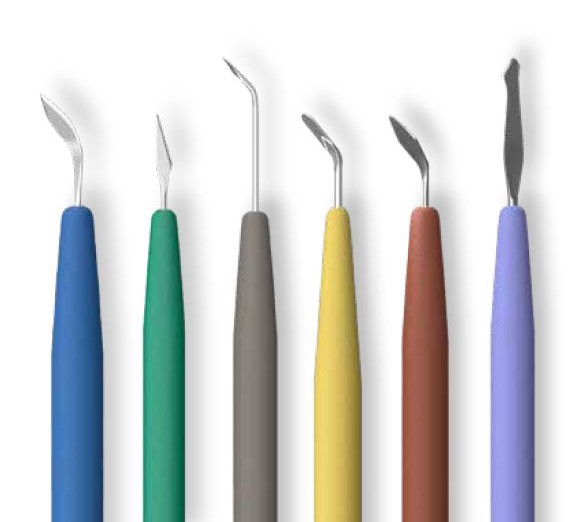Die Magnetresonanztomographie (abgekürzt MRT) gilt in der Medizin als Goldstandard für die Darstellung innerer Organe und Gewebe. Eine MRT des Kopfes ermöglicht die Früherkennung von Tumoren oder Schlaganfällen. Die Magnetfeldstärke kann während einer MRT-Untersuchung Implantate hinsichtlich Temperaturerhöhung, Bildartefakten und Lageveränderung beeinflussen.
Sie sind Patient, besitzen einen Patientenpass und möchten mehr zum MRT-Sicherheitsstatus Ihres Implants erfahren?
Dann klicken Sie bitte auf das Auswahlfeld „Für Patienten“
Sie sind Arzt und Operateur und möchten weitere Informationen zu unseren ophthalmochirurgischen Implantat hinsichtlich MRT erfahren?
Dann klicken Sie bitte das Auswahlfeld „Für Ärzte“ an.
Lieber Patient,
alle Intraokularlinsen von HumanOptics mit und ohne Blaulichtfilter jeglichen Materials (Acryl, Silikon, PMMA) sind MR sicher. Mit diesem Implantat können Sie sicher in einem Magnetresonanztomopgraphie-Gerät gescannt werden.
Lediglich ein spezielles Model, die OCCLUSIVA (MS 714 black und MS 614 black), ist auf Grund ihrer schwarz pigmentierten Optik nicht MR sicher. MRT-Aufnahmen dieser Modelle können zu Bewegungen der IOL und Reizungen des umliegenden Gewebes, sowie zu Bildartefakten im Bereich der IOL führen. Es wird empfohlen, dass Sie nach einer MRT-Untersuchung Ihren behandelnden Augenarzt aufsuchen.
Das Irisimplantat, die ARTIFICIALIRIS, ist als bedingt MR-sicher einzustufen. Das bedeutet, wenn Ihnen eine ARTIFICIALIRIS implantiert wurde, können Sie nur unter bestimmten Bedingungen sicher im Magnetresonanztomopgraphie-Gerät gescannt werden. Bitte zeigen Sie ihren Implantatsausweis vor der MRT Untersuchung vor. Ihr Arzt wird daraufhin die nötigen Sicherheitsvorkehrungen treffen.
Weitere Implantate der HumanOptics, das MicroSil Diaphragm, Kapselspannringe und der Krumeich Cornea Ring sind ebenfalls als MR sicher einzustufen.
Bitte besuchen Sie folgenden Link für weitere Patienteninformationen zu unseren Implantaten www.humanoptics.com/patient-information, kontaktieren Sie unseren Customerservice per Email customerservice@humanoptics.com oder telefonisch unter +49 (0) 9131 50 66 5-0.
Lieber Fachkreis,
Alle Intraokularlinsen von HumanOptics mit und ohne Blaulichtfilter jeglichen Materials (Acryl, Silikon, PMMA) sind MR sicher. Ihre Patienten können mit diesem Implantat sicher in einem Magnetresonanztomopgraphie-Gerät gescannt werden.
Lediglich ein spezielles Model, die OCCLUSIVA (MS 714 black und MS 614 black), ist auf Grund ihrer schwarz pigmentierten Optik nicht MR sicher. MRT-Aufnahmen dieser Modelle können zu Bewegungen der IOL und Reizungen des umliegenden Gewebes, sowie zu Bildartefakten im Bereich der IOL führen. Es wird empfohlen, dass der Patient nach einer MRT-Untersuchung den behandelnden Augenarzt aufsucht.
Das Irisimplantat, die ARTIFICIALIRIS, ist als bedingt MR-sicher einzustufen. Das bedeutet, wenn bei Ihrem Patienten eine ARTIFICIALIRIS implantiert wurde, kann Ihr Patient nur unter bestimmten Bedingungen sicher im Magnetresonanztomopgraphie-Gerät gescannt werden. Alle wichtigen Informationen diesbezüglich entnehmen Sie bitte der Gebrauchsanweisung
Weitere Implantate der HumanOptics, wie das MicroSil Diaphragm, Kapselspannringe (gültig für MRT- Scans bis zu 7 Tesla) und der Krumeich Cornea Ring (gültig für MRT-Scans bis zu 3 Tesla) sind ebenfalls als MR sicher einzustufen.
Für weiterführende Informationen kontaktieren Sie bitte unseren Kundenservice per E-Mail customerservice@humanoptics.com oder telefonisch unter +49 (0) 9131 50 66 5-0.
This post is also available in: Englisch
UNSER
KUNDENSERVICE
IHRE
FRAGEN
Gerne stehen Ihnen unsere Experten bei Fragen jederzeit zur Verfügung.



